Hello
=D
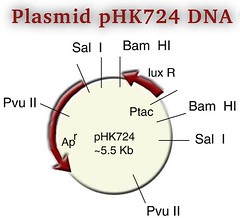
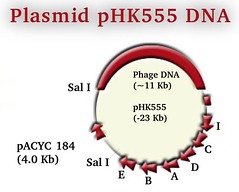
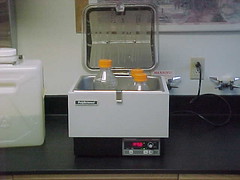 | 1. Culture desired bacterial strain overnight in LB broth with chloramphenicol (Cm) added to a final concentration of 50 mg/ml. Note: Cm must be added to the growth medium to apply selective pressure on E. coli to maintain the plasmid pHK555 which contains a chloramphenicol resistance gene. |
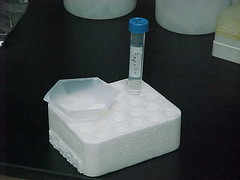 | 2. Inoculate 200 µl of overnight culture into 50 ml of LB with antibiotic Cm to final concentration of 50 mg/ml LB in an Erlenmeyer flask plugged with cotton or capped with an inverted breaker. |
 | 3. Incubate at 37ºC with agitation and monitor culture density with photoelectric colorimeter Note: Examples of the types of photoelectric colorimeter is Spectronic 21 and Klett-Summerson (Baxter Diagnostics, Inc.). |
 | 4. Allow the culture to reach an optical density of 0.35 to 0.50 at a wavelength of 550 nm. Note: This is mid-log phase of growth and generally takes 2.5 hours. This is equivalent to 40-80 Klett units when using a Klett colorimeter. |
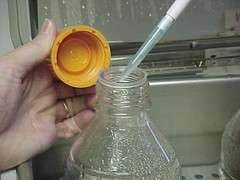 | 5. Pipet 1 ml culture to 1.5-ml Eppendorf tube and microfuge for 2 minutes before pouring off the supernatant. Add a second 1 ml and repeat microfuge and pouring of supernatant. Note: If a microfuge is not available, any centrifuge can be used to pellet the E. coli cells. |
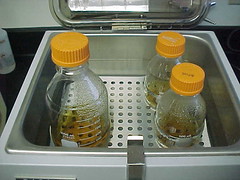 | 6. Resuspend pellet in 200 ml of frozen storage buffer (FSB). |
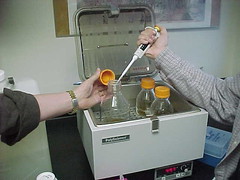 | 7. Incubate on ice for 15 minutes. |
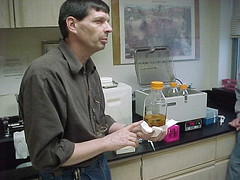 | 8. Microfuge 2 minutes and pour off the FSB. |
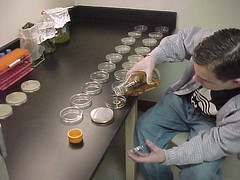 | 9. Resuspend pellet in 200 ml FSB. |
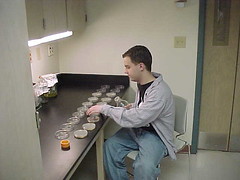 | 10. Bacteria are now "competent" and ready for transformation. Note: Competent cells can only be stored in the refrigerator for up to 24 hours or for up to 6 months if stored in a -70°C freezer. The FSB (CaCl2 solution) should be stored at 4°C and made fresh every 6 months. |
 | 1. Add plasmid pHK724 DNA (5µl) to 50-200µl of competent cells. |
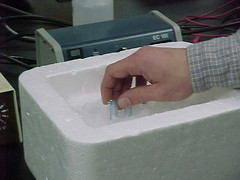 | 2. Incubate on ice 15 minutes. |
 | 3. Place tubes in 42°C water bath for 90 seconds (heat shock). |
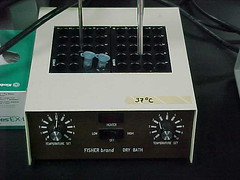 | 4. Incubate at room temperature for 5 minutes. |
 | 5. Add 1 ml of LB and incubate broth at 37°C for 1 hour. |
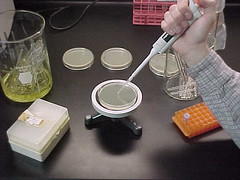 | 6. Add 100 µl to selective solid medium. Spread with glass spreader. |
 | 7. If transforming for luminescence, incubate agar plates at 30°C or room temperature for 30-48 hours. |
 | 8. The bioluminescent colonies are viewed in a dark room. Note: It takes about 5 minutes for one's eyes to "dark adapt." |
|
|
Post a Comment
<< Home